High blood pressure, frequently referred to as high blood pressure, is a persistent clinical problem that affects millions of individuals worldwide. Commonly referred to as the “quiet awesome,” high blood pressure can go unnoticed for many years, progressively damaging various organs and oculax reviews enhancing the risk of serious wellness problems. Identifying the symptoms of high blood pressure is essential for very early medical diagnosis and reliable administration of this condition. In this article, we explore the principal symptoms and signs of high blood pressure, offering beneficial understandings to aid people determine and address this silent danger.
It is very important to keep in mind that high blood pressure is a multifactorial problem, affected by a mix of hereditary, lifestyle, and environmental elements. While some individuals may experience obvious signs, lots of people with high blood pressure do not show any outside signs. Routine surveillance of blood pressure is the only certain way to discover hypertension accurately. Nevertheless, some typical signs might indicate the presence of hypertension, and they should not be ignored. These cardiotens colombia symptoms consist of:
1. Frustrations
Frustrations, especially those taking place in the early mornings, can be a possible indication of high blood pressure. While migraines can be triggered by numerous variables, constantly experiencing frustrations, particularly at the rear of the head, need to trigger further examination for high blood pressure.
High blood pressure can lead to boosted stress on capillary in the mind, leading to migraines and various other neurological symptoms.
2. Fatigue
Really feeling tired and lacking energy can be an indicator of hypertension. The enhanced strain on capillary as a result of high blood pressure can hamper the reliable distribution of oxygen and nutrients to the body’s cells, bring about exhaustion and a basic sense of weak point.
3. Lightheadedness and impaired thinking
Hypertension can create disturbances in blood circulation to the brain, bring about episodes of wooziness and faintness. These symptoms are especially typical when standing up promptly or after prolonged periods of sitting or lying down and can indicate hypertension.
4. Shortness of breath
Experiencing difficulty in breathing or shortness of breath, particularly during physical effort, can be an indicator of hypertension. Reduced blood circulation to the lungs due to high blood pressure can hinder the exchange of oxygen and co2, bring about breathlessness.
Additionally, high blood pressure can lead to the accumulation of fluid in the lungs, additionally exacerbating breathing problems.
5. Chest pain
Breast discomfort or discomfort can happen as a result of hypertension-induced heart troubles. Hypertension can stress the heart muscle mass, resulting in conditions such as angina and even a cardiac arrest. Upper body pain need to constantly be taken seriously and evaluated by a physician.
It is essential to note that while these signs can show the visibility of hypertension, they can additionally arise from other underlying clinical problems. Consequently, a detailed medical analysis is required to determine the root cause of these signs accurately.
When to Look For Medical Attention
If you experience any of the signs mentioned over or think you may have high blood pressure, it is crucial to look for medical interest without delay. While high blood pressure itself might absent instant deadly threats, unchecked hypertension with time can bring about serious issues, including cardiovascular disease, stroke, kidney damages, and vision loss.
A health care professional will perform a comprehensive assessment, which may include blood pressure surveillance, physical examinations, and lab tests, to identify high blood pressure properly. Early discovery and intervention play a vital duty in avoiding or managing the long-term consequences of hypertension.
- Monitoring and Treatment Options
When diagnosed, hypertension can be successfully taken care of via way of life alterations and, in some cases, medication. Adopting a heart-healthy way of life is vital for managing high blood pressure levels and reducing the risk of issues. This includes:
- Eating a well balanced diet plan rich in fruits, vegetables, entire grains, and low-fat dairy products
- Reducing sodium intake by preventing processed foods and limiting making use of table salt
- Participating in normal exercise, such as vigorous walking, swimming, or biking
- Preserving a healthy and balanced weight through a mix of a balanced diet and physical activity
- Staying clear of tobacco and excessive alcohol consumption
- Taking care of stress with leisure techniques like meditation, deep breathing exercises, or participating in hobbies
If way of living modifications alone want in managing blood pressure, medical care experts might suggest medicines to aid regulate blood pressure levels. Medications generally used to treat high blood pressure include diuretics, beta-blockers, angiotensin-converting enzyme (ACE) preventions, angiotensin II receptor blockers (ARBs), calcium channel blockers, and others. These medications work by kicking back blood vessels, reducing fluid quantity, or disrupting hormonal processes that add to hypertension.
Conclusion
Hypertension is a common problem that commonly goes undetected because of the absence of noticeable signs and symptoms. However, different indicators can suggest the visibility of high blood pressure. Frustrations, fatigue, wooziness, shortness of breath, and breast pain are a few of the symptoms related to high blood pressure. It is vital to understand these indicators and seek clinical attention promptly to avoid long-term problems. An all natural approach, integrating way of living modifications and, if needed, drug, can successfully handle blood pressure and boost total health.
